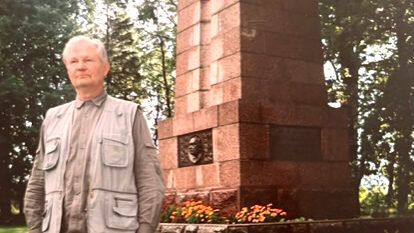It is extreme, though, to make comparisons to the Holodomar, Holocaust. Also to use the exaggerated claim, (such as in Canada’s indigenous community today that colonialism was genocide) of a desire to eradicate a people. But without a doubt there was a determined effort to first remove potential political opponents and the second time around to institute the deeply flawed economic system of collectivization in the Baltics.
How this could have been achieved in 1949, when most able-bodied men were either dead thanks to the war, in hiding or as refugees abroad, boggles the mind. Loading pensioners, women and children, breast-feeding infants onto cattle trains is unfathomable. As is the fact that there were still many local collaborators with the regime. Did not 1941 teach anyone anything?
It was of great benefit to read coverage of official events in Tallinn online. But of concern was to notice the sparse attendance at the Maarjamäe memorial wall, erected to the victims of communism.
On March 25th, 1949, the deportations began. Over 20,000 people from Estonia, over 90 thousand in total from three small countries that never posed a threat to the Soviet bear. This week some reports in Estonian media that covered the 75th anniversary remembrance memorials suggested that this amounted to genocide. Hardly, the Soviets had to leave hard-working people to till the soil, man the factory machines, keep a teetering economy alive. The forced death-labour in Siberia was also necessary if very inefficient. But the Russian autocrats, authoritarians over the centuries, whether tsarist or communist, knew no other way. Enslave a people while they reaped the benefits of living large in palaces and country estates.
Become a subscriber to continue reading!
Every week we bring you news from the community and exclusive columns. We're relying on your support to keep going and invite you to subscribe.
Starting from $2.30 per week.



